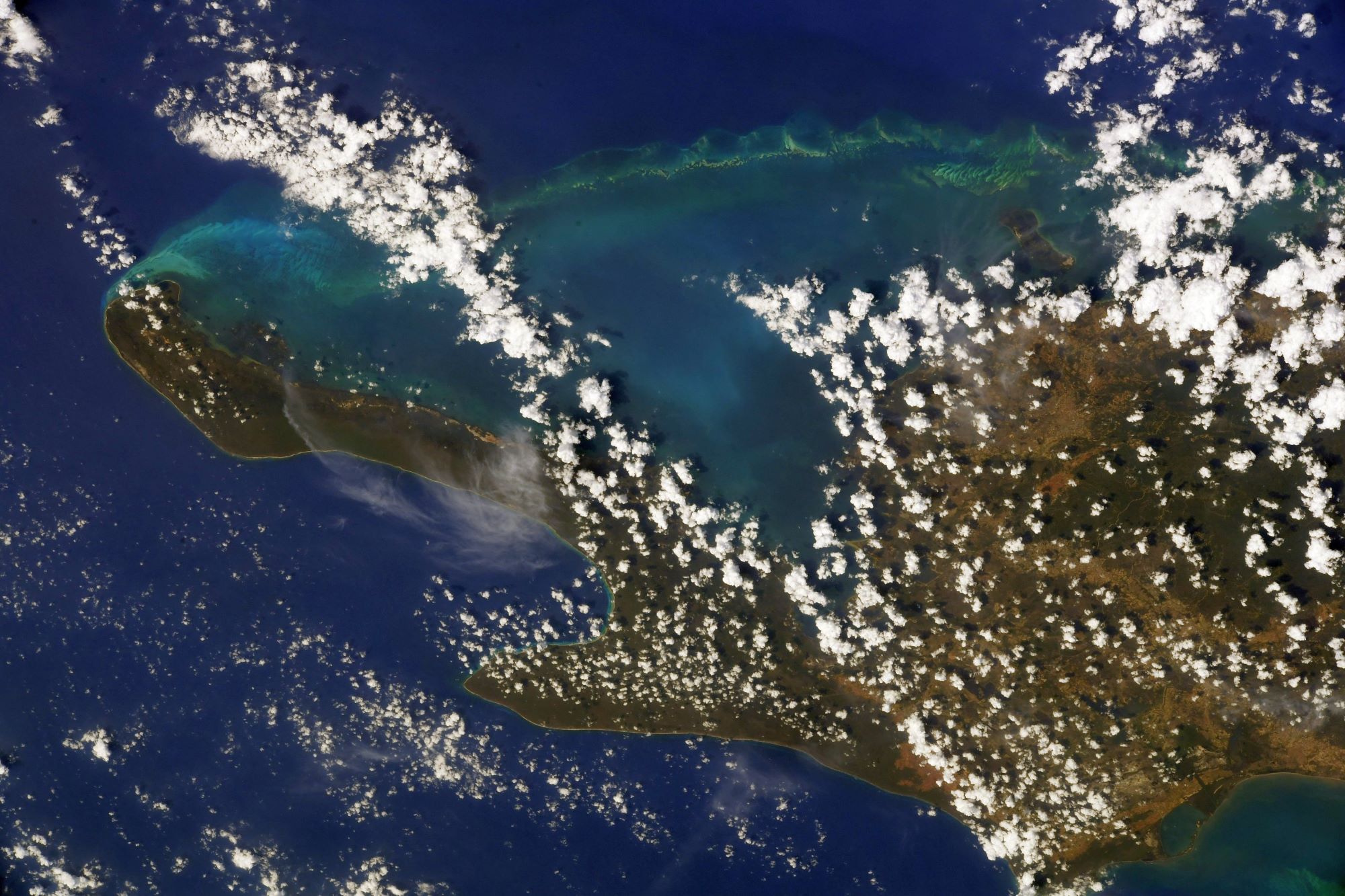Astronaut Soichi Noguchi captured from ISS Guanahacabibes Biosphere Reserve, Cuba.

Guanahacabibes Peninsula is the westernmost point on the island of Cuba. The waters surrounding the peninsula are important spiny lobster and red snapper fishing grounds. It also boasts the category of Biosphere Reserve, listed by UNESCO in 1987. The Guanahacabibes National Park on the peninsula is one of the country’s largest natural reserves and is separated from the rest of the island by white-sand plains where one of Cuba’s largest lakeside areas lies. A relatively small area holds some 100 lakes, as well as the largest and purest fields of silica sand, which is 99.8% pure. The area is inhabited by 172 species of birds belonging to 42 families, 11 of which are endemic and 84 are migratory. Experts also believe that 4 of the 7 species of marine turtles living on the planet have survived in the Guanahacabibes Peninsula. The peninsula was one of the last refuges of aboriginals fleeing from the Spanish conquistadors and also holds some 140 archeological sites linked to the life of aborigines, who were known as Guanahatabeyes.
The local scenery on the ground is as follows.

Reference: Soichi Noguchi’s Tweet
See earthview photo gallery: LiVEARTH